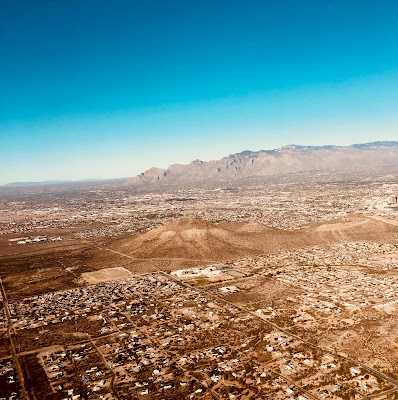 |
| Cynthia's Ancient Roman Glass Vessel |
Both of us have been obsessed with the patina of Ancient Roman Glass and we have tried different techniques over the years to replicate the effect of being buried for centuries. We realize that eventually the supply will run out and this finite resource will be no more. Plus, once I've cracked the code, I'll be able to make shapes and forms that either didn't exist at the time or are cost prohibitive to obtain.
Cynthia's new treasure inspired me to dust off my notes and dig up my recipes and try my hand again at making some Faux Roman Glass. This time I wanted to tackle vessels.
What follows are my experiments and my trial-by-error attempts. There are probably easier ways of doing this and if you have suggestions that you've tried, feel free to leave helpful recommendations. If I do this again, I have a feeling that I'll tweak the recipes and adjust amounts. I'm getting closer and closer!
So, the "directions" aren't really "directions". Let's get that out of the way. What follows are pictures that I snapped and things that I've gleaned from my notes, but they are NOT step by step recipes. Everyone has their own way of working and what works for me might work for you. So feel free to explore and experiment and if you make anything using any of these notes, I'd love to see what you made. I know it can be frustrating... but I work intuitively and that's just how I work (and cook as a matter of fact).
Chances are, the original Roman Glass Vessels were blown glass. I wanted to work with polymer clay, which has its limitations in regards to replicating this process. I remembered when I was making lampwork glass beads, and one of the tutorials I came across talked about creating vessels without blowing them. It entailed wrapping steel wool around the mandrel and then coating that in bead release. So, I knew it was possible to create these core vessels and that I could probably create a variable process for polymer clay.
The question became... what to use as a core that could be malleable, but would also dissolve and come out relatively easily. The answer came by way of middle school earth sciences!
 |
| Powdered Eggshells can be surprisingly useful! |
One of the things that I keep from the kitchen are eggshells. In the garden, I use them to enrich the soil and in the studio, I grind them into a powder and use them for all sorts of projects! Eggshells are calcium carbonate, which has all kinds of applications. Old recipes for gesso for egg temperas include ground up eggshells. Calcium carbonate is also used for archival purposes and to create plaster recipes. So, I have powdered eggshells in my studio pantry... you know, just in case.
To prepare the eggshells, clean them thoroughly and allow them to dry. Roast them in an oven at a low temperature (around 200 degrees or so) and that will make them more brittle and easier to grind. You can use a mortar and pestle or an electric grinder (for a slightly coarser texture). For super fine powder, use a solid glass muller with a little bit of distilled water.
 |
| Removing lumps in the dry ingredients makes a smoother clay. |
Dissolvable Clay Body
2 parts eggshell powder
2 parts baking soda (baking powder will NOT work)
1 part cornstarch
1 part all purpose flour
2 drops dish soap (adjust amount in relation to the amount)
Water
Combine dry ingredients and sift. If you don't have a sifter or want to sift them, use the back of a spoon and crush any lumps and thoroughly mix. Add water SLOWLY. Once the clay is malleable, add soap and knead until smooth and the clay holds it's shape.
 |
| Drop by drop, the water should be added. |
 |
| This is an example of TOO much water! |
If you add too much water, it'll turn into a mess! It reminds me of another science experiment that we did where we made our own slime. If there is too much water, the clay will not hold its shape and will melt into a puddle.
If you add too much water, you can still get it "right" again. Add more dry ingredients until the clay and be rolling into a ball like dough. Too much eggshell powder will make the clay grainy. Cornstarch is a thickener, but it also makes the clay smoother. Too much cornstarch and water will make the clay slump and melt. Too much baking soda will make the clay brittle and cracky. Too much flour will result in mini bread loaf cores that will be hard to remove later on.
 |
| The dish soap will save your hands and make the clay smell better! |
 |
| A good clay will be smooth, but hold its shape. |
In early versions of this recipe, I didn't include the flour and I found that the clays were not ideal for shaping. They were fine for pressing into molds or to take impressions, but not suitable for shaping. They didn't have the elasticity that the flour glutens add.
 |
| The cores don't have to be too elaborately sculpted. |
Once you've formed your cores, it is VERY IMPORTANT that they are completely dry. You'll see later what happens when the dissolvable core is not fully dry. It's also important that you dry them slowly. If they dry too fast, they'll crack and split. To insure that they are dry all the way, I suggest putting them on paper towels and turning them from time to time. The paper towels will help wick off the excess moisture. Once they are dry to the touch, usually overnight, they would benefit from being put in a dehydrator or in an oven set at a low temperature.
 |
| Smooth the clay around the cores evenly, but not TOO evenly. |
For this project, I used Viva Decor Pardo Translucent clay colored with Ranger Alcohol Inks. I used a mix of Mermaid, Stream, and Lettuce. In hindsight I would have added only two drops each of each color for more translucence, as the inks are very saturated and the finished pieces are a little bit darker than I had originally intended. I'll do a follow-up post or video on how to add alcohol inks to your clays.
As a variation, you could use Sculpey Premo! Opal Accent Clay. It has little flecks of iridescent transparent film. It's a wee bit trickier to work with, as the clay can sometimes want to reject its inclusions, but it creates a pretty magical result.
Roll the clay out on the thickest setting and wrap the core. One of the things that makes the Ancient Roman Glass Vessels special is that they are all a little wonky. They're irregular and a little thicker in places and thinner in other places. Celebrate that. If there's a crack, just patch it with extra clay. Make sure all the seams are covered and that there is a ALWAYS a hole. If you want the piece to not have a hole for whatever reason, like in a rattle, you can fill them in later.
Once everything is shaped, roll the pieces in big flake sea salt and bake as directed.
 |
| Dunking hot polymer in a cold liquid is a tip to increase translucency. |
You might need to use a straw brush used to clean pipes and tubes and some dish soap to clean any residual core material that didn't dissolve completely.
 |
| Cracks aren't the end of the world with this project! |
But it's okay! Actually it adds a little character. Polymer clay is actually very forgiving and can be easily mended. For minor cracks I used Sculpey Bake and Bond. For bigger cracks, I coated the edges with the liquid polymer clay and then smashed a small piece of clay until it's mushy and squishy. Once it's got a soft consistency and slightly sticky, I smear it in the cracks. When I re-bake the pieces, I make sure to wrap them up tight or tape them together, so that the cracks fuse together and don't continue to split while the clay is hot and pliable.
 |
| These are the finished Polymer Clay Faux Roman Glass Vessels. |
Once you've figured out placement of your ancient crustiness, I powder on a little more iridescent pigment powers and then embed salt. Cure the pieces in the oven and then dunk them in water to dissolve the extra salt. And when everything is cool and dry, embellish your pieces with pearlescent and opalescent paints. I suggest having a piece on-hand for reference, but you can go as wild and fantastical as your heart desires. Really, it's all about having fun and putting your own spin on it. These are just some tips, tricks, and techniques that I've been working on for the past decade or so, but you might have a different recipe or idea or way of doing it! Mother Nature has had millennia to perfect her recipe!

























